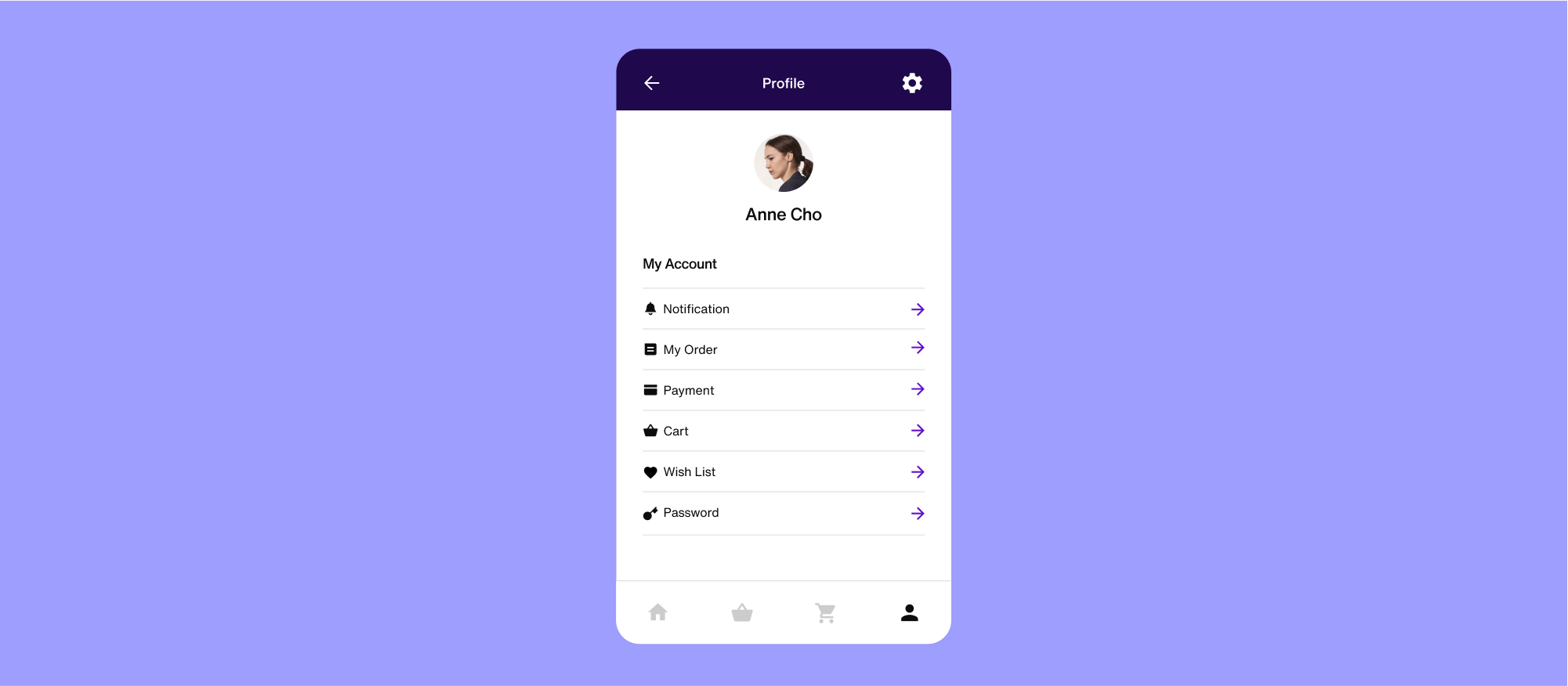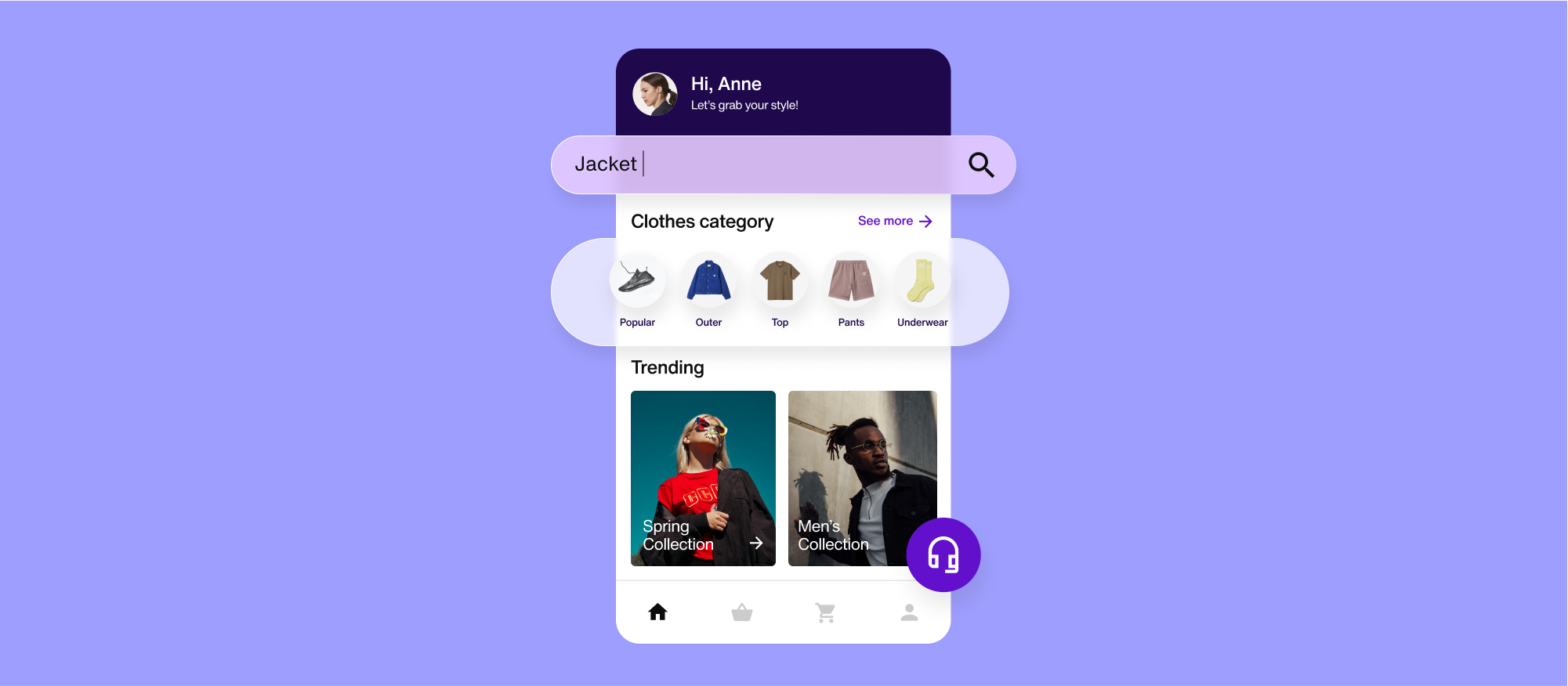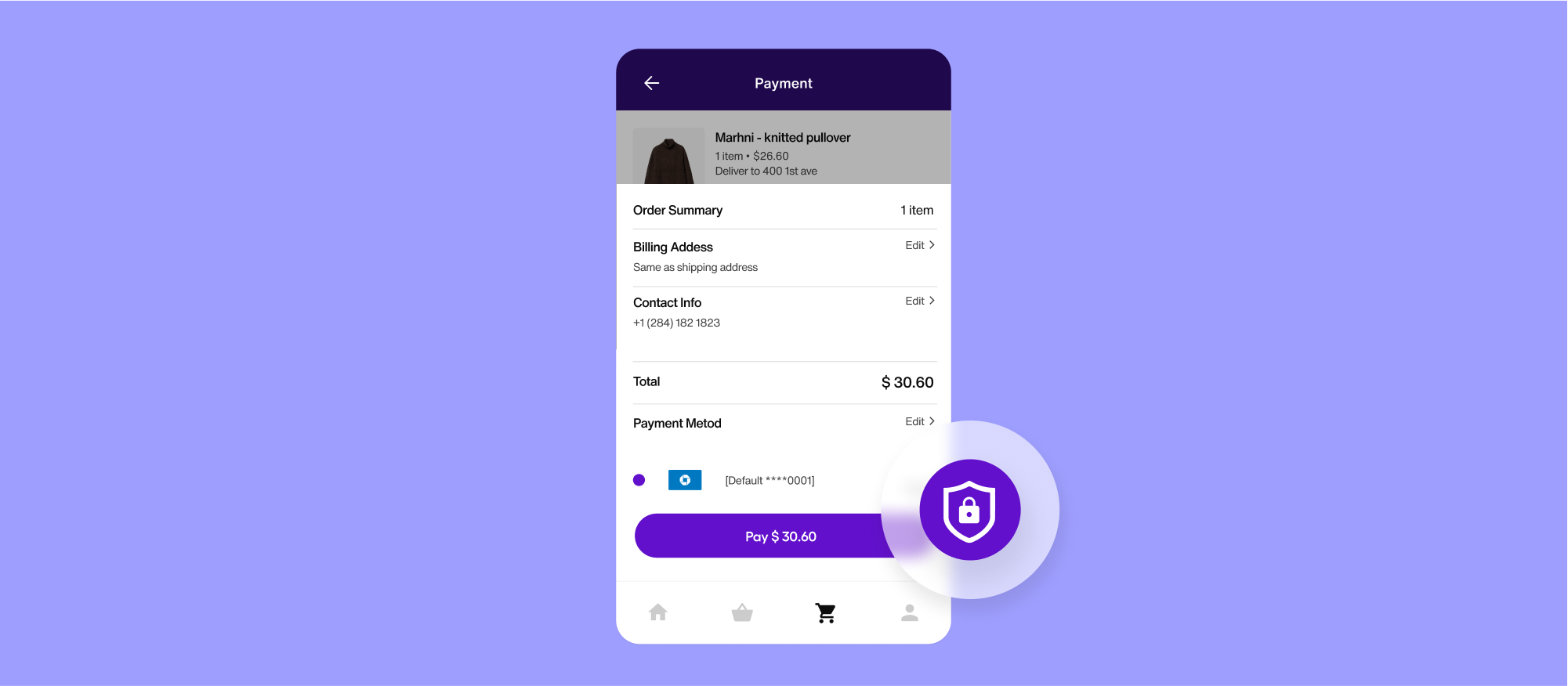How & why to build an e-commerce mobile app for customers

Not only will 40% of e-commerce sales take place via mobile in 2024, but already more than 87% of sales happen on mobile devices happen on smartphones, specifically.
In a shift that mirrors the major supplementation of brick-and-mortar stores with online shops, today, a web-based e-commerce experience needs a mobile application to keep up with modern consumer demands.
With that in mind, let’s cover the distinct benefits of going mobile and several feature recommendations to help you create an e-commerce app to meet today’s demands.
The what and why behind mobile e-commerce apps
E-commerce mobile applications enable customers to shop and make purchases from an online store. In this space, you may also hear the term “m-commerce,” which refers to shopping done via any mobile device (like phones and tablets).
E-commerce isn’t the same as but is related to social commerce, where brands spin up shops on social media sites such as Instagram and TikTok from which consumers can complete a purchase.
But what makes a mobile app beneficial for the modern shopper — and seller?
Uniquely fast
Mobile apps are often faster than websites (even those built for mobile) because they save data locally. And speed, of course, is a key element of a cutting-edge shopping experience that converts consumers.
Opportunity for personalization

Between the ability for customers to create profiles (more on that in the features section), analytics, and coding tricks — app-based businesses are uniquely positioned to track and understand each user’s behavior. This creates opportunities to shape highly-personalized shopping experiences that increase sales by serving precisely what a customer is looking for at exactly the right time.
Better brand visibility
Notifications are one of the best visibility features you can have. In addition to bringing customers back into an owned channel, you can provide value anytime, preferably when your customer is most likely to click back into your app.
If you serve notifications to new consumers in their first three months of using your app, their retention rate will be three times higher than for shoppers who don’t get notifications.
Outside of notifications, having your app is just another fully customizable extension of your brand. And it's always good to get visibility through new channels.
Retention-ready
We mentioned retention, so we have to mention that e-commerce mobile apps are core to creating brand loyalty. App users are more likely to make repeat purchases. This is critically important when considering how customer retention is more important than acquisition for long-term app viability and overall business success.
8 e-commerce app features customers will love
Now for the essential features a mobile e-commerce app needs to see success.
Easy customer support/associate conversations
Regarding high-end brands, it’s the norm to give valuable customers direct access to sales associates via phone number and email.
Luckily, that same white-glove experience can pretty easily be replicated in the age of the digital boutique by building a conversation platform into your mobile e-commerce app.
With the help of Sendbird, merchants can easily integrate chat messaging, voice and video calling, and more to facilitate flawless, real-time conversations between customer support, sales, and customers.
Maintain the luxury experience and finally capture all of that important customer data that used to be lost to in-person conversations — from preferences to patterns and requests — by taking customer support and sales associate interactions in-app with Sendbird.
Concise, consistent design
Design is the core thing users will judge your business by when they land on your application for the first time.
Also, the design will guide them as they navigate your shopping app and work toward an eventual purchase.
For this reason, it’s imperative that your design doesn’t just look great but that it’s clean, makes your app easy to understand and use, and remains consistent not just within the app itself but within the universe of symbols that people have come to recognize — think the envelope icon for email, the gear icon for settings, etc.
To start your e-commerce app design on the right foot, look for guidance from the operating symptoms, such as Android’s Material Design and iOS’s Human Interface Guidelines.
Simplified browsing

The “three tap rule” is something we think every well-designed e-commerce mobile app should align with.
This rule dictates that any action a user wants to take should be able to complete within three taps. Those actions may include finding a product, purchasing a product, leaving a review, getting customer support, etc.
In the case of finding a product, there are different ways to simplify the process for shoppers, including creating search functionality and breaking down products into categories that are easily accessed via your app’s main menu. And when it comes to helping shoppers contact support, that should be almost immediately accessible via chat functionality on all or most pages of your app.
As you can see, there are plenty of ways to think creatively about your app workflow to simplify browsing.
Thumb-friendly shopping experience
There’s only so much space on a phone screen, and only a percentage of that is easily accessed by thumb when a customer is scrolling your app with one hand.
It’s imperative to put the elements of your app you want users to interact with the most — search, add to cart, complete purchase, etc. — in the thumb-friendly territory to make the checkout as friction-free as possible.
Helpful personalization
Apps can be built to log data on user behavior, giving you insight into the patterns behind certain groups of consumers, such as how they interact with your app and what products they like.
This lets you automate smart personalization through product recommendations and suggested search queries.
Further your customization capabilities by plugging in-app analytics that provide a deeper look at specific user behavior — and help you measure how your personalization efforts are paying off.
Customer profiles
Take personalization even further by enabling customer profile creation within your e-commerce store.
Customer profiles provide a means for saving shipping and payment information, speeding up the purchasing process. In addition, they can store purchase history, lists of liked items, and other settings that give you helpful information when serving relevant ads or recommendations.
Keep the login flow as short and sweet as possible, and save that information as long as possible before asking people to sign in again. Too many steps and too many login requests are a sure way to intimidate and scare off users.
On-demand offerings
Like ghost kitchens, ghost retailers provide lower-cost fulfillment outlets that make quick delivery possible in today’s on-demand economy.
Integrate specialty software in your app that facilitates messaging for on-demand to connect every element of the order — delivery people, customers, and customer support — and ensure fast, affordable, and reliable delivery.
Visible security measures

Consumers must trust e-commerce mobile apps with sensitive information to enable personalization and complete transactions.
In a world where e-commerce purchases are still the new kids on the block compared to website purchases, are you making it clear that your security and compliance efforts protect their personal and payment information?
Ensuring your security measures are up to snuff will cost some time and money. Still, the repercussions of not having strong security are more damaging — security breaches that could lead to fines and legal action, loss of consumer trust, and ultimately loss of revenue and loyalty.
E-commerce app development: To build or to buy?
The above benefits and feature recommendations have probably led you to one final, important consideration: How to build an e-commerce app.
And this is where we get to share our favorite tech tip with you. For most businesses that sell goods and services, buying will make the most sense than building.
This means sourcing the best software for each piece of your business, then customizing it and how it all works together to create an experience worthy of your brand.
From the e-commerce platform to payment processing, in-app search, inventory management, and beyond, robust tools already exist in each category. And there are plenty of benefits to using them: Affordable scalability, industry-leading security and compliance, low to no maintenance costs, and so on.
And it’s not just about increased capabilities and time and money savings. When you invest in purpose-built software to help you run your business and make your e-commerce app, you get to focus on something fundamental — the products, services, and unique experience that make you stand out and make you money.
When it comes time to add end-to-end customer support, feature-rich chat, ChatGPT-powered bots, and anything else in the communications realm to your e-commerce app — turn to Sendbird for an experience that your team, as well as your customer base, won’t be able to stop raving about.
Sign up today to take advantage of Sendbird’s easy-to-implement yet powerful APIs, SDKs, and ready-made UI components. It’s free to start, and we can’t wait to see what you build.










